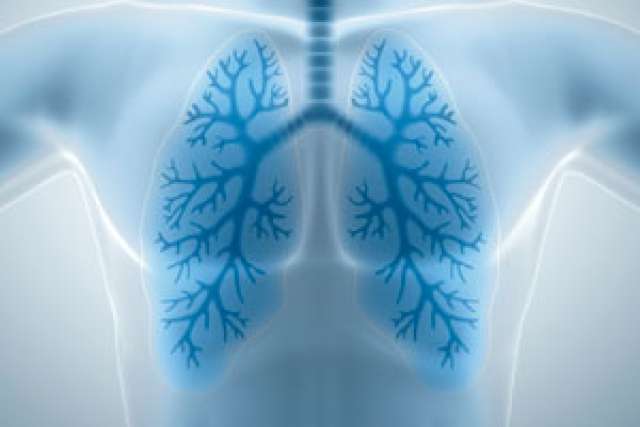Researchers at UCLA’s Jonsson Comprehensive Cancer Center have discovered a novel mechanism to predict survival in older women with early stage lung cancer. The finding may have significant implications for new treatment approaches.
For the first time, UCLA researchers linked higher levels of aromatase, an enzyme that naturally makes estrogen from another hormone called androgen, to more aggressive disease and lower survival rates in women over 65 with Stage 1 or 2 lung cancer. The discovery not only gives physicians a possible new tool to predict survival but may also provide a target for therapy using aromatase inhibitors, already approved for the treatment of breast cancer.
The study, conducted as part of the Specialized Program of Research Excellence (SPORE) in lung cancer at UCLA, appears in the Nov. 1 issue of the peer-reviewed journal Cancer Research.
"All indications suggest that this is a very powerful prognostic marker that lets us predict which patients have a higher likelihood of prolonged survival versus death from lung cancer," said the study's senior author, Lee Goodglick, an associate professor in the UCLA Department of Pathology and Laboratory Medicine and a Jonsson Cancer Center researcher. "If doctors know that a woman has a higher probability of longer-term survival, they may choose a more strategic course of action, compared to a woman with a more aggressive form of lung cancer, where doctors might choose a more aggressive course of therapy. Another notable finding from this study is that we’re able to predict survival at a relatively early stage of the disease, when we have more treatment options.”
Based on research done at Jonsson Cancer Center labs, scientists knew that estrogen played a role in lung cancer growth, much as it does in breast cancer. In animal models, researchers showed that either estrogen or aromatase triggered the growth of human lung cancer tumors. They then looked retrospectively at lung cancer tumor samples from more than 750 men and women seen at UCLA or the University of Texas' M.D. Anderson Cancer Center using a novel high-throughput technology called tissue microarray. Aromatase levels were measured and correlated with disease aggression and survival rates.
Researchers found that in women 65 and over, higher aromatase levels were associated with more aggressive disease and a greater risk of death.
"We were surprised at what we found," said Goodglick, who also serves as co-director of the UCLA Early Detection Research Network and is an investigator in the lung cancer SPORE program. "Pioneering work done by Richard Pietras' group here at UCLA had shown that the hormone estrogen had a major impact on lung cancer, analogous to what is seen in breast or ovarian tissues. But we didn't know this enzyme, aromatase, would be so important, and we certainly didn't anticipate that it would play a seemingly bigger role in women than in men. At the start of this study, we basically put these data into an unbiased black box and discovered these novel correlations."
Goodglick said it is an important question why aromatase levels work as predictors only in women and, equally as intriguing, why they work best in those over 65. It does not appear to be related to menopause, since the average age of onset is about 51. Instead, it may have more to do with levels of another family of hormones, androgens, which steadily decrease in women over 65. Aromatases use certain androgens as starting material to make estrogen. The cancer may be devising ever-changing strategies to, in effect, feed itself so it can grow and spread more rapidly.
About 98,000 women will be diagnosed with lung cancer this year alone, and more than 70,000 will die. The incidence of lung cancer in women has been increasing for decades, and the disease causes the most cancer-related deaths in females. New treatments are desperately needed, Goodglick said, as conventional therapies aren't effective.
"This was a true multidisciplinary team effort," Goodglick said. "Each person was critically important."
The study included researchers from the UCLA departments of pathology and medicine, the UCLA lung cancer SPORE program and the Jonsson Comprehensive Cancer Center, as well as experts in biostatistics. The next step for researchers will be to continue their work with an even larger patient population at multiple cancer centers nationwide. This will help determine the framework by which physicians might use this test effectively in the clinic. Defining the role that estrogen and the estrogen pathway play in lung cancer and devising way to intervene at each step, tailored to a specific patient, will also be key, Goodglick said.
"We need to figure out all the strategies that a lung cancer cell uses to trigger and amplify the estrogen pathway," he said. "In women over 65, one trick the cancer cells appear to use is increasing aromatase — it remains an interesting mystery what strategy the cancer cells are using in women under 65 and in men. Identifying which branch of the estrogen pathway is hijacked by cancer cells will allow us to specifically attack that branch on a person-by-person basis. I think this study is one important step in that direction."
UCLA's Jonsson Comprehensive Cancer Center comprises about 235 researchers and clinicians engaged in disease research, prevention, detection, control, treatment and education. One of the nation's largest comprehensive cancer centers, the Jonsson Center is dedicated to promoting research and translating basic science into leading-edge clinical studies. In July 2007, the Jonsson Cancer Center was named the best cancer center in California by U.S. News & World Report, a ranking it has held for eight consecutive years.
Researchers find way to predict lung cancer survival for women

Related Content
Articles:
Services:
Share:


